Chapter Fifteen
Everyone has heard of the Grand Canyon, and if you are a river rat, running the Colorado through the canyon is undoubtedly high on your bucket list. The Grand is one of the most incredible river trips in the world. Its scenery is spectacular and unique. Its side canyons provide excellent hiking and adventure. Its rapids are exciting and huge, but not as dangerous or technical as some rapids on other challenging whitewater rivers. Plus, the trip is long. You can spend three weeks in the depths of the canyon, far from the maddening crowd and totally cut off from technology, making it the ultimate escape.

Mark Haggerty having the time of his life on his first Grand Canyon adventure.
Tom Zell
But there are lots of other amazing rivers out there, each with its own unique character and charm; each with its personal advocates who claim it is like no other. The following list of dream rivers is by no means exhaustive or authoritative. I’m sure you will find people who question the merits of the rivers included and excluded, but most people will have at least some of these rivers on their list.
Think of this as a starting point. You can always add your own must-dos to your bucket list as you begin to explore. And this list is in no particular order. All the rivers listed are awesome if you have the skill and experience required to navigate them. Lots of other rivers are awesome, too. Let this list whet your appetite as you start planning your own river adventure.
Colorado River, Grand Canyon, Arizona
The classic trip through the Grand Canyon starts in Lee’s Ferry and ends 226 miles downstream at the Diamond Creek takeout. In between you float through eighty rapids and past ever-changing layers of rock that rise vertiginously from the river’s edge and date back hundreds of millions of years. The canyon is known for its side hikes, which include scrambling up the Elves Chasm and wandering past the aquamarine pools in Havasu Creek. The Colorado’s rapids are big, rollicking, and fun, and although challenging to run, they end in pools that enable rafters to regroup and rally if they run into trouble. Securing a permit on the Colorado is through a lottery system. Sign up for an account at https://grcariverpermits.nps.gov/login.cfm. Lottery applications are open from February 1-24 for the following year.
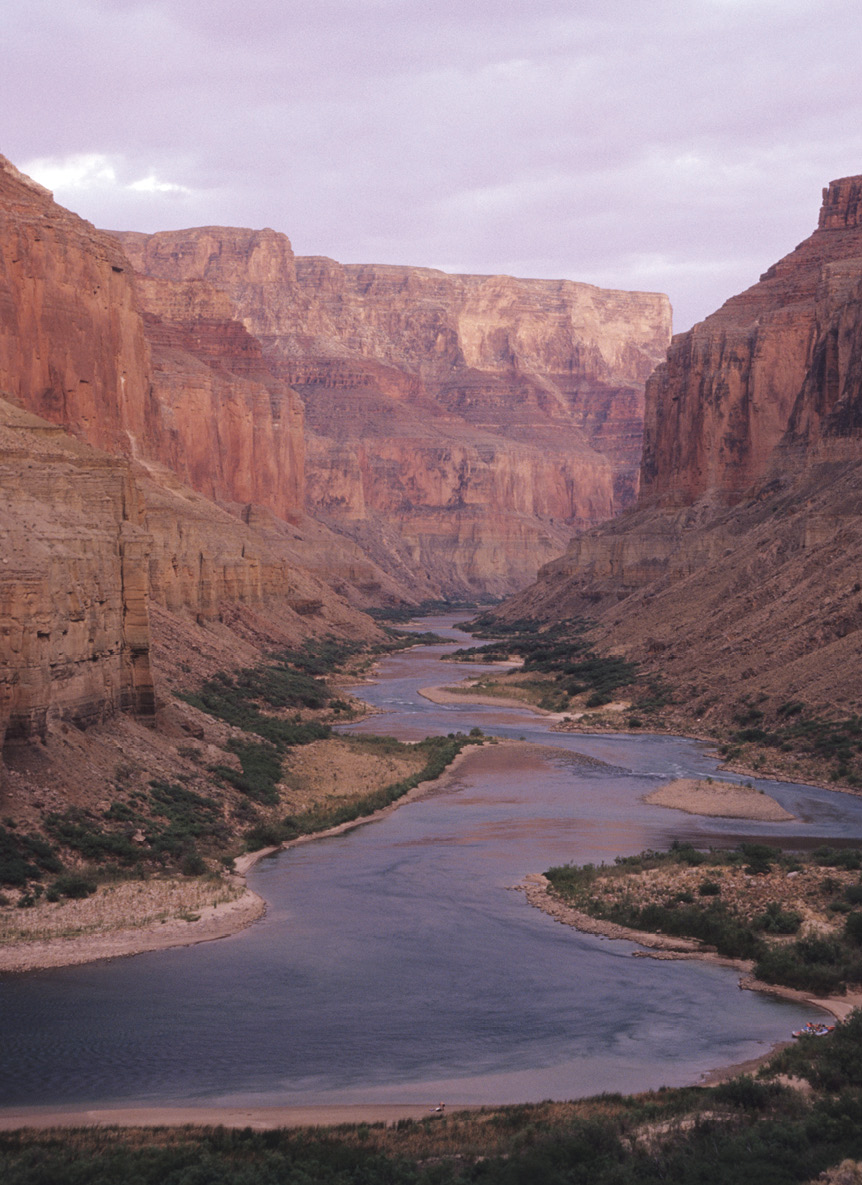
A three-week adventure through the Grand Canyon is considered by many to be the ultimate American river trip.

Hiking up Havasu Canyon is one of the Grand Canyon’s most famous side trips, but there are hundreds of other worthy hikes along the river.
Molly Absolon
Middle Fork and Main Salmon River, Idaho
The Middle Fork and Main Salmon are two classic wilderness rivers that flow through Idaho’s Frank Church–River of No Return Wilderness, the second largest wilderness area in the Lower 48. The Middle Fork is a Class III-IV, 75- to 100-mile run (depending on put-in and takeout), with close to one hundred rapids along its course, while the Main is mostly Class III and flows 84 miles from put-in to takeout, with lots of rapids in between.

The Middle Fork of the Salmon River is a classic wilderness run.
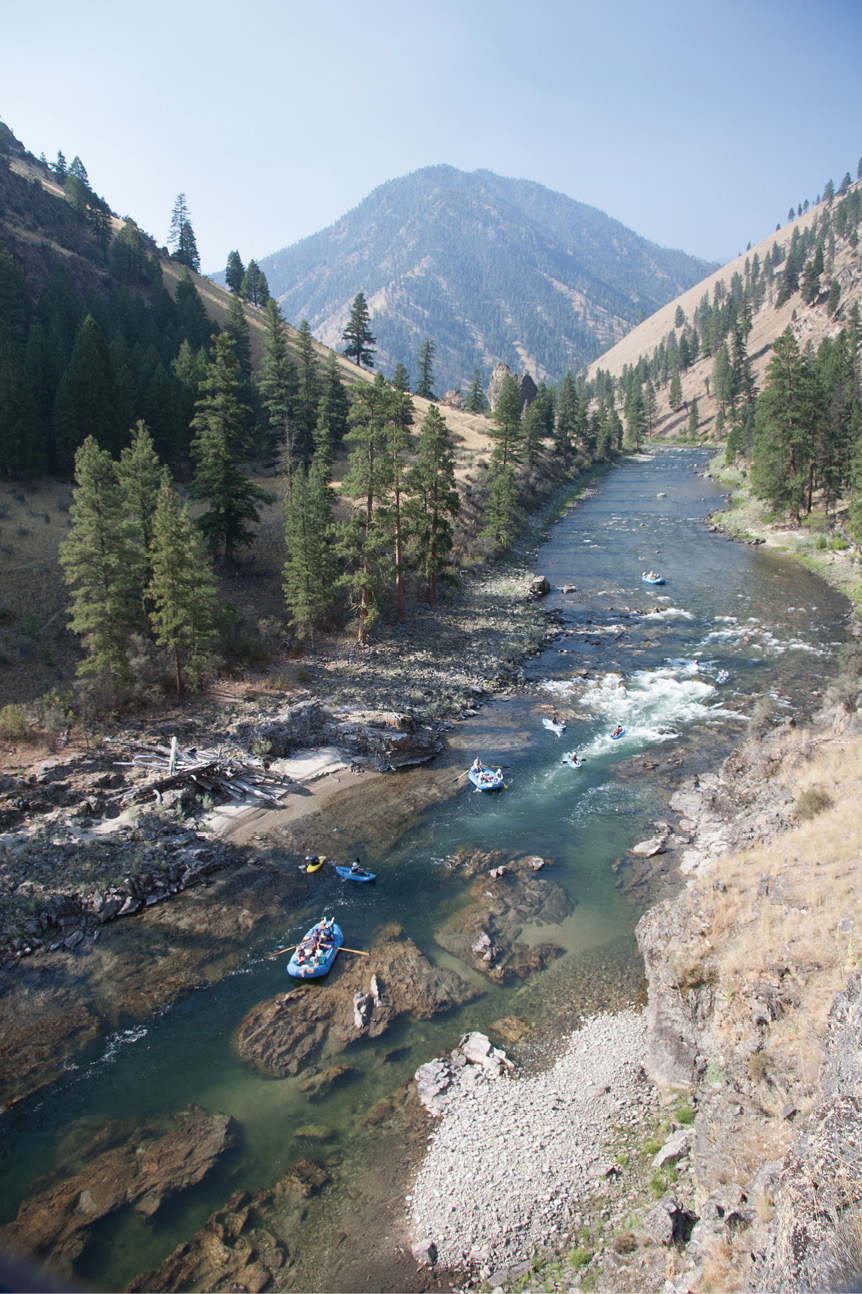
The Middle Fork is known for its clear water, challenging rapids, hot springs, and great fishing.
A combo Middle-Main trip—known as “turning the corner”—is the ultimate wilderness experience, although it’s tricky to secure a permit that allows that adventure.
Both rivers flow through deep-forested canyons featuring wide sandy beaches, hot springs, world-class trout fishing, hiking, wildlife, and spectacular scenery. The Salmon is a free-flowing river, with flows peaking in early summer and dropping off as the season progresses. Both rivers require a permit for their high season, which is obtained through a lottery. For the Middle Fork that season runs from May 28 through September 3. For the Main it’s June 20 through September 7. Outside the controlled season a permit is required but there is no limit on numbers. You can obtain a low-season permit through the Forest Service. The Main and Middle Fork lottery opens Dec. 1 and closes Jan. 30 for the following season. Go to the Four Rivers Lottery site at https://www.fs.usda.gov/detail/scnf/passes-permits/recreation/?cid=fsbdev3_029568 for details.

Slightly easier than the Middle Fork, the Main is a pool-drop river with big sandy beaches that make excellent campsites.
Green River, Gates of Lodore, Colorado and Utah
Starting in Colorado and running down to the Split Mountain boat ramp near Vernal, Utah, this stretch of the Green River is 44 miles long and rated Class III, with one Class IV rapid depending on water levels. The trip is usually done in three or four nights, and flows through the deep red chasm of Lodore Canyon into Echo Park, where Steamboat Rock towers over the river, then into Whirlpool Canyon, and ends in Split Mountain Canyon. The geology along this stretch of river is spectacular, with rock layers shooting up from the river and twisting back down again in torturous folds. Bighorn sheep are common, as are beavers, skunks, black bears, and deer. The camping is on broad sandy beaches sheltered by box elders and cottonwoods. Permits are required during the high season, which runs from May 8 through Sept. 8. Register for the annual lottery between Dec. 1 and Jan. 30 at recreation.gov.
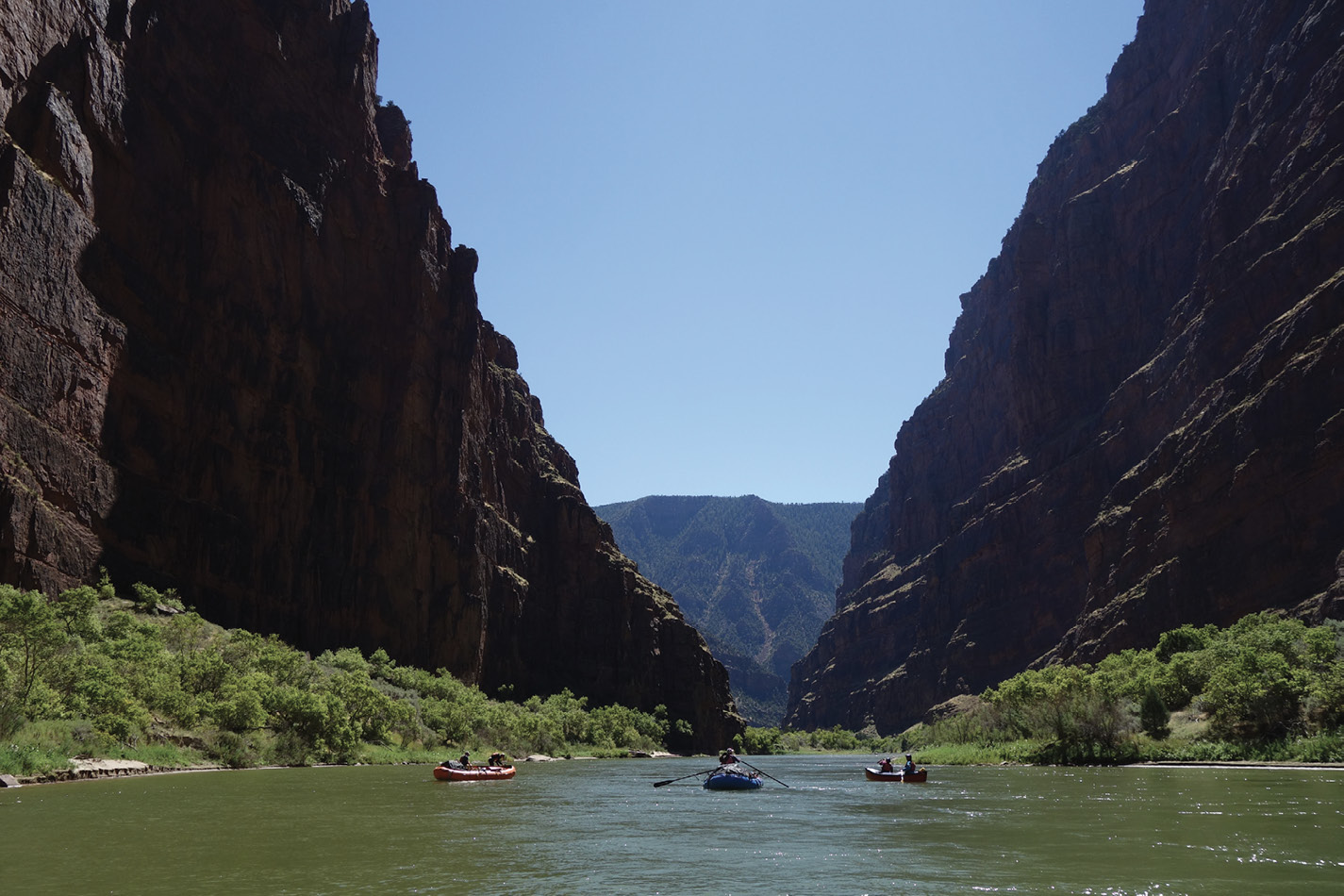
The Gates of Lodore run takes you down the Green River through three separate canyons, starting here at the actual gates.
Eric Scranton
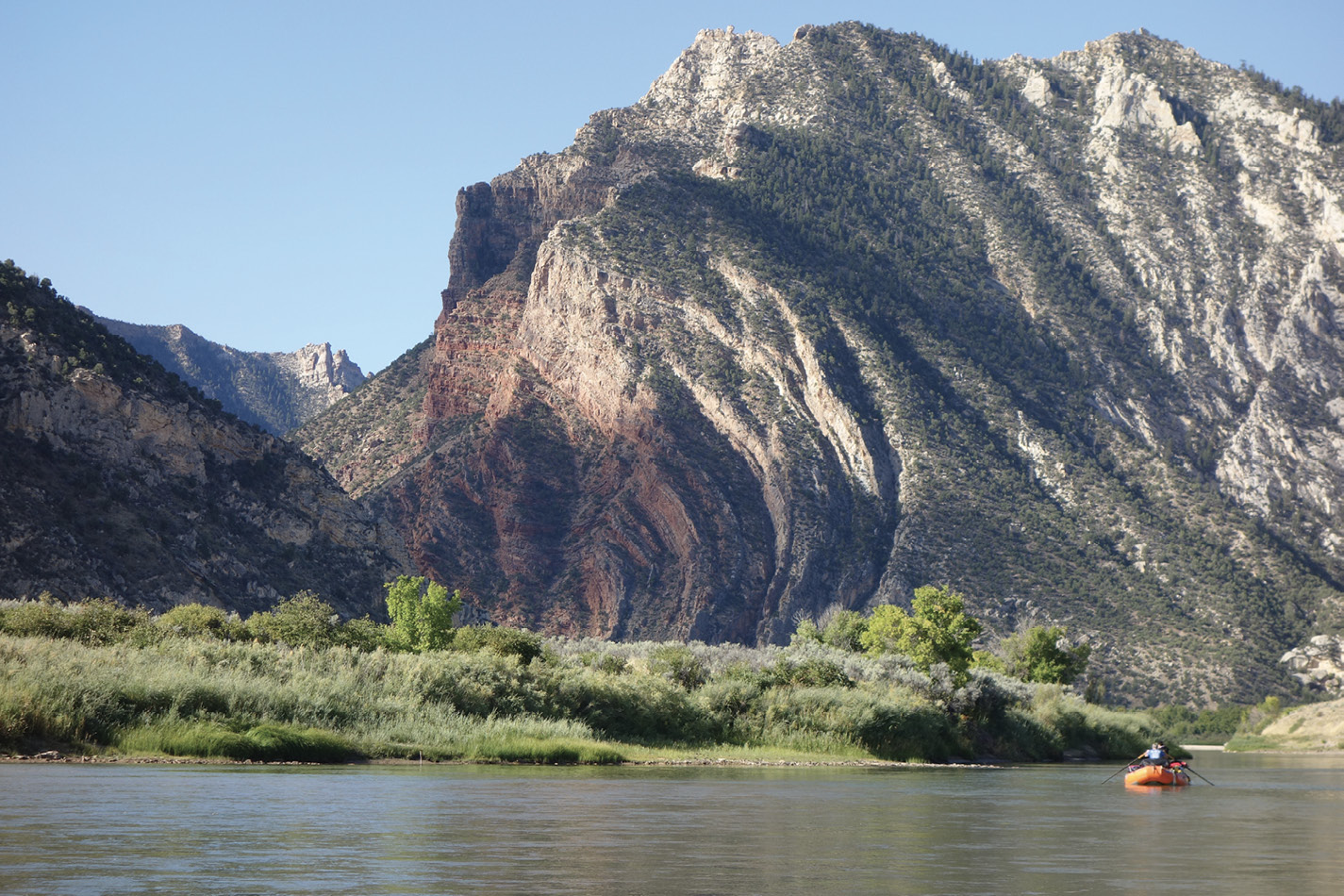
The spectacular geology on display in Split Mountain Canyon on the Green River.
Eric Scranton
Yampa River, Colorado
The Yampa joins the Green in Echo Park, making it possible for the last part of this river trip to overlap with the Lodore trip mentioned above, unless you opt to take out in Echo Park. The Yampa is one of the few free-flowing tributaries to the Colorado River system. It flows through buff-colored sandstone cliffs streaked with “desert varnish” that tower over the river corridor. Camping is on sandy beaches, and side hikes lead up to big vistas that some say rival the Grand Canyon. Known for its archeological sites and wildlife, the Yampa is a four- or five-day trip with Class III-IV rapids. Its season runs from May through July, and permits are secured through recreation.gov’s lottery system, which is open from Dec. 1 until Jan. 30.

The Yampa River is one of the few free-flowing tributaries in the Colorado River system.
Moe Witschard
Rogue River, Oregon
The Rogue River flows out of the Cascade Mountains down to the Pacific Ocean. The classic whitewater run stretches for 35 miles and includes eighty rapids rated up to Class IV in difficulty. The river is surrounded by lush, Northwestern forests renowned for their botanical diversity, huge trees, and abundant wildlife. You are likely to see otters, black bears, deer, bald eagles, great blue herons, and more. Plus, the Rogue is a salmon run, and fishing along its length is world-class. Most rafters take three to four days to run the river. You can stay at lodges along the way, or there are beaches for camping. Permits for the Rogue are obtained through recreation.gov’s annual lottery, which takes place Dec. 1 through Jan. 30 for the following season. Permit season runs from May 15 through Oct. 15.

The Rogue River flows through lush Northwestern forests to the Pacific Ocean.

The Rogue trip includes running Mule Canyon, where the river tightens and the rapids start rocking.
Selway River, Idaho
Idaho’s Selway River stretches for 47 miles through remote wilderness that is only accessible by boat, foot, or horseback. The river drops 28 feet per mile over the course of its run, creating a highly technical, exciting whitewater adventure with rapids up to Class IV in difficulty. Scenery in the river corridor is rugged and beautiful, and the area is home to elk, deer, black bears, and eagles. The river’s crystal clear water hosts a healthy trout population, and the fishing is renowned. Most groups spend two to four nights running the Selway. Permit season for the river runs from May 15 through July 31, when water flows drop, making it impassable for larger boats. Only one trip is permitted to launch per day, adding to the river’s wilderness allure. Apply for permits between Dec. 1 and Jan. 31 at rereation.gov.

The Selway River is known for its challenging technical rapids and wilderness character. Only one trip is allowed to launch on the Selway each day during permit season.
Courtesy SOAR Northwest
Tatshenshini–Alsek Rivers, Yukon Territory, British Columbia and Alaska
The Tatshenshini River offers a consummate wilderness rafting experience. It starts in the Yukon Territory and flows between two towering mountain ranges—the Alsek and Saint Elias—on its way to join the Alsek River and then flow into the sea. You’ll float past massive glaciers, through emerald-green rain forests, and by aquamarine icebergs. Wildlife is abundant in the river corridor, and you are likely to see grizzly bears, wolves, moose, and eagles. The run is 140 miles long and is Class II, except for a Class III section through the Tatshenshini Gorge. Most groups take nine days to two weeks to make the trip. Permits are required. To secure a permit, contact the Yakutat Ranger Station in Wrangell-Saint Elias National Park and Preserve. With a $25 administrative fee, your name is put on a list. Each fall permit winners are selected from the list. You can reach the ranger station at (907) 784-3295, or by writing the Yakutat Ranger Station, Wrangell-Saint Elias National Park and Preserve, PO Box 439, Mile 106.8, Richardson Highway, Copper Center, AK 99573. All groups must fly out of Dry Bay at the conclusion of the trip.
Zambezi River, Africa
Starting at the foot of Zambia’s Victoria Falls, the Zambezi River plunges through 120 miles of Class V rapids at the bottom of a 600- to 800-foot basalt gorge. You have to do a guided trip to run the Zambezi, but it’s a four-day, once-in-a-lifetime trip that you’ll never forget. This river is big, scary, and fun; add in crocodiles and hippos, and you have quite the adventure in store. In the hands of a trained and talented guide, the Zambezi will have you screaming and laughing as you dive into enormous waves and plow through curling hydraulics. The Zambezi appears on this list because it’s one rafters talk about, but it’s not for the faint of heart, nor can you run it on your own.
Futaleufú River, Chile
The Futaleufú, which is a Mapuche Indian word meaning grand, grand waters, is another big volume, Class V river that draws whitewater boaters from all over the world to northern Patagonia, Chile. The river is known for its turquoise-colored water, spectacular scenery, and raging, nonstop whitewater. Typically run as a series of day trips, the Futaleufú flows through glaciated mountains that rise more than 5,000 feet above the river bottom. The river itself is fast, fun, challenging, and remote. Rafters need to be confident in Class V water to tackle the Futaleufú, but for those who have the skill it’s a unique adventure that tops most people’s bucket lists.

The Green River through Desolation and Gray Canyons is a great first river trip for new rafters. The rapids start easy and get gradually harder with the toughest being a Class III+.
Other Thoughts
The world is full of incredible rivers, many of which allow for amazing, multiday float trips. Other rivers that come to mind include the Firth, the Nahanni, or the Chilko in Canada. You can raft the Salt River in Arizona, or the Green through Desolation/Gray Canyons. The San Juan River flows through southern Utah’s Colorado Plateau, past ancient Puebloan ruins and through deeply incised canyons. Besides the Grand Canyon, the Colorado offers beautiful, multiday, challenging whitewater trips in Westwater and Cataract Canyons, or you can float through Oregon’s remote desert canyons on the Owyhee, Bruneau, or Jarbidge Rivers, all of which are designated Wild and Scenic Rivers. The Illinois River in Oregon is hard, beautiful, and fun, while the Deschutes River is easier and more family-friendly. Each river has its own variables—difficulty, length, ease of access, expense, permits, and season, which affect when and if it is runnable, and each is unique in its scenery and character. You may find your favorite river turns out to be one of the more obscure runs just because it is obscure and, therefore, uncrowded.
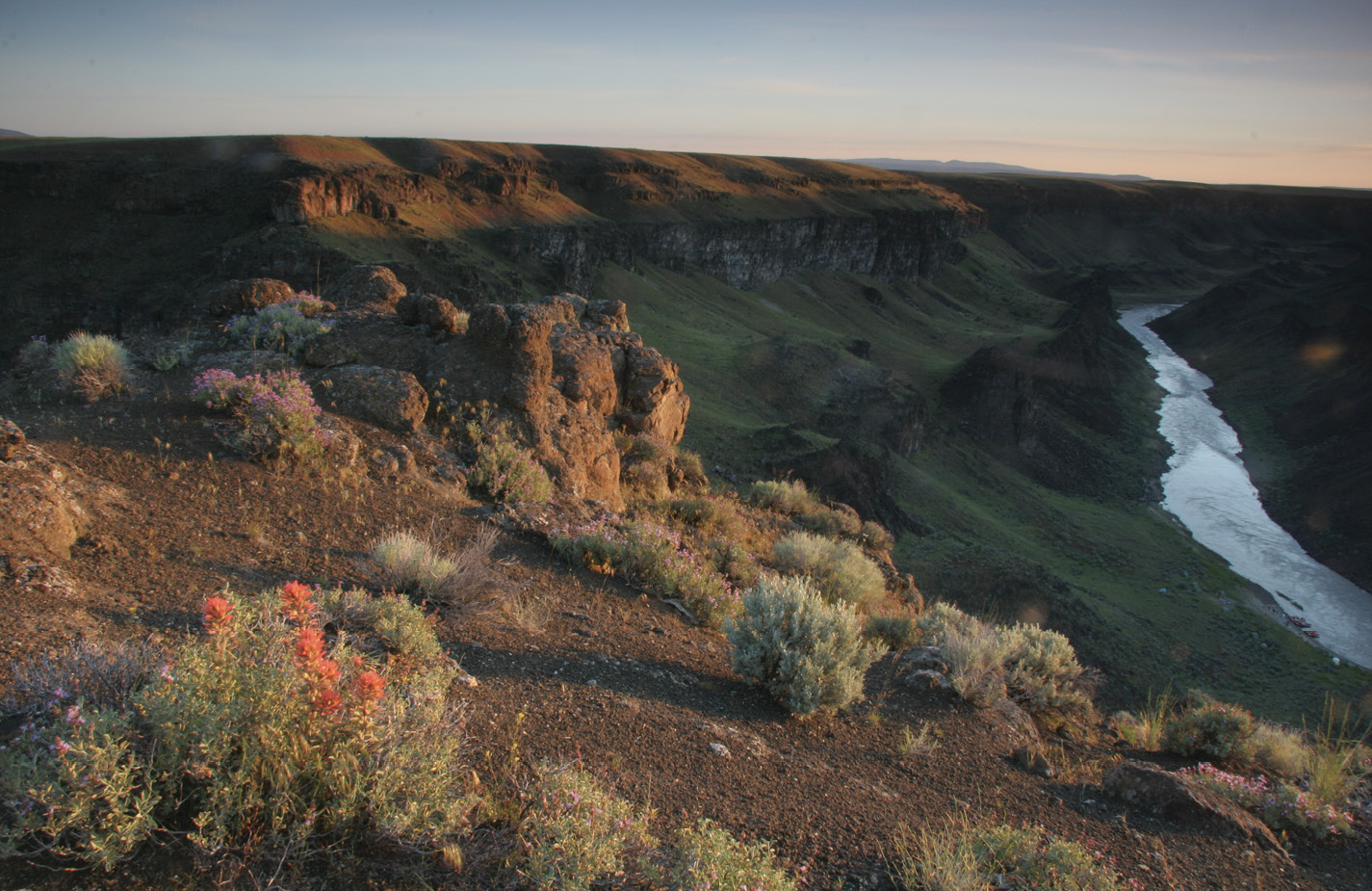
The Owyhee River cuts a deep canyon through the eastern Oregon desert.
If you are excited about heading out on your own multiday river trip, it’s time to get online and start doing some research. Figure out how to get permits, check in to outfitters, find out the season, look at the ratings, and you are sure to find a trip that meets your skill level, experience, and schedule. And have fun. River trips are the ultimate escape from everyday life. They allow you to relax, recharge, and enjoy being surrounded by nature’s splendor.

The San Juan River is perfect for families. No rapid is harder than Class II, and there are lots of archeological sites to explore.